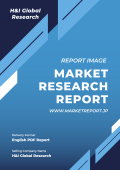| ■ 英語タイトル:Polyisobutylene (Pib) Market - Growth, Trends, Covid-19 Impact, and Forecasts (2023 - 2028)
|
 | ■ 発行会社/調査会社:Mordor Intelligence
■ 商品コード:MOR23MR077
■ 発行日:2023年1月23日
■ 調査対象地域:中国、インド、日本、韓国、アメリカ、メキシコ、カナダ、ドイツ、イギリス、イタリア、フランス、ブラジル、アルゼンチン、サウジアラビア、南アフリカ
■ 産業分野:化学・材料
■ ページ数:120
■ レポート言語:英語
■ レポート形式:PDF
■ 納品方式:Eメール(受注後2-3営業日)
|
■ 販売価格オプション
(消費税別)
※販売価格オプションの説明はこちらで、ご購入に関する詳細案内はご利用ガイドでご確認いただけます。
※お支払金額は「換算金額(日本円)+消費税+配送料(Eメール納品は無料)」です。
※Eメールによる納品の場合、通常ご注文当日~2日以内に納品致します。
※レポート納品後、納品日+5日以内に請求書を発行・送付致します。(請求書発行日より2ヶ月以内の銀行振込条件、カード払いも可能)
※Mordor Intelligence社の概要及び新刊レポートはこちらでご確認いただけます。
*** レポート概要(サマリー)***Mordor Intelligence社は、世界のポリイソブチレン(PIB)市場規模が予測期間中(2022年~2027年)、年平均5%で成長すると見込んでいます。当調査レポートではポリイソブチレン(PIB)の世界市場について調査・分析を行い、イントロダクション、調査手法、エグゼクティブサマリー、市場動向、用途別(タイヤチューブ、接着剤・シーラント、潤滑剤、可逆剤、その他)分析、地域別(中国、インド、日本、韓国、アメリカ、メキシコ、カナダ、ドイツ、イギリス、イタリア、フランス、ブラジル、アルゼンチン、サウジアラビア、南アフリカ)分析、競争状況、市場機会・将来動向などの項目をまとめています。また、市場調査の対象企業には、BASF SE、Braskem、Dowpol Corporation、Exxon Mobil Corporation、JXTG Nippon Oil & Energy Corporation、Kemipex、The Lubrizol Corporation、TPC Group、SABIC、Shandong Hongrui New Material Technology Co. Ltdなどが含まれています。
・イントロダクション
・調査手法
・エグゼクティブサマリー
・市場動向
・世界のポリイソブチレン(PIB)市場規模:用途別
- タイヤチューブにおける市場規模
- 接着剤・シーラントにおける市場規模
- 潤滑剤における市場規模
- 可逆剤における市場規模
- その他用途における市場規模
・世界のポリイソブチレン(PIB)市場規模:地域別
- アジア太平洋のポリイソブチレン(PIB)市場規模
中国のポリイソブチレン(PIB)市場規模
インドのポリイソブチレン(PIB)市場規模
日本のポリイソブチレン(PIB)市場規模
…
- 北米のポリイソブチレン(PIB)市場規模
アメリカのポリイソブチレン(PIB)市場規模
カナダのポリイソブチレン(PIB)市場規模
メキシコのポリイソブチレン(PIB)市場規模
…
- ヨーロッパのポリイソブチレン(PIB)市場規模
ドイツのポリイソブチレン(PIB)市場規模
イギリスのポリイソブチレン(PIB)市場規模
イタリアのポリイソブチレン(PIB)市場規模
…
- 南米/中東のポリイソブチレン(PIB)市場規模
ブラジルのポリイソブチレン(PIB)市場規模
アルゼンチンのポリイソブチレン(PIB)市場規模
サウジアラビアのポリイソブチレン(PIB)市場規模
…
・競争状況
・市場機会・将来動向 |
The market for Polyisobutylene (PIB), is expected to witness a CAGR of about 5% during the forecast period. The major factor driving the market studied is increasing demand from the adhesives and sealants industry. On the flipside, instability of polyisobutylene being non-UV resistant and unfavorable conditions arising due to the COVID-19 outbreak, are hindering the growth of the market.
Key Highlights
- Polyisobutylene, as a substitute for wool fat in stuffing agents for the production of leather, is expected to offer various opportunities for the growth of the market.
- Adhesives and sealants and lubricant industries are the dominant segments, in terms of demand, over the forecast period.
- Asia-Pacific region dominates the market globally, with the most substantial consumption from countries like China, Japan, South Korea, and India.
Polyisobutylene Market Trends
Increasing Demand from Adhesives & Sealants Industry Segment
- The adhesive and sealant industry is anticipated to witness a CAGR of approximately 5% during the forecast period. Major applications of the polyisobutylene in the adhesive and sealant industry are to seal joints, to seal and protect electrical wirings, and to protect body cavities from moisture. Polyisobutylene is used in adhesive systems in the form of pressure-sensitive and hot-melt adhesives, and are used due to their tackiness, flexibility, and low cohesive strength, mainly in PSAs and hot-melt adhesives.
- Growth in residential construction in the Asia-Pacific region is expected to act as a driver for pressure sensitive and hot melt adhesives. Polyisobutylene sealant is used for damp proofing, rubber roof repair, and maintenance of roof membranes.
- The residential construction growth rate estimations for 2020 for significant economies like India, China, and the United States are 9%, 4%, and 3%, respectively. This, in turn, is likely to create a demand for polyisobutylene from the adhesive and sealant industry in the consuming countries.
- The adhesives & sealants industry is expected to dominate the global polyisobutylene market over the forecast period.
Asia-Pacific Region to Dominate the Market
- Asia-Pacific is expected to be the dominant market for polyisobutylene during the forecast period. It is because the region dominates the market for applications such as tire tubes, adhesives and sealants, lubricants, plasticizers, fuel additives, and electrical insulation.
- Polyisobutylene is widely used in lubricants for modifying/improving the viscosity of the lubricant formulations to the desired final viscosity. The lubricants market is currently witnessing an increasing demand for high-performance lubricants, owing to their better and improved properties, such as reduced flammability, reduced gear wear, and increased service life.
- Polyisobutylene is added to fuel to improve the viscoelastic property. Derivatives of polyisobutylene are used as ash-less dispersants (such as PIBSA) to minimize deposits and prevent oil thickening and formation of sludge. The implementation of stringent environmental regulations and awareness among consumers in the region will also boost the market. The Asia-Pacific fuel additives market is estimated to witness significant growth, at an estimated CAGR of about 5%.
- Thus, rising demands from the polyisobutylene applications mentioned above are expected to drive the growth of the market in the Asia-Pacific region.
Polyisobutylene Market Competitor Analysis
The polyisobutylene (PIB) market is fragmented with the presence of both international and domestic players in the market. The major companies include BASF SE, Braskem, Dowpol Corporation, TPC Group, and The Lubrizol Corporation, among others.
Additional Benefits:
- The market estimate (ME) sheet in Excel format
- 3 months of analyst support
1 Introduction
1.1 Study Assumptions
1.2 Scope of the Study
2 Research Methodology
3 Executive Summary
4 Market Dynamics
4.1 Drivers
4.1.1 Increasing Demand from Adhesives and Sealants
4.1.2 Other Drivers
4.2 Restraints
4.2.1 Instability of Polyisobutylene being Non-UV Resistant
4.2.2 Unfavorable Conditions Arising due to the COVID-19 Outbreak
4.3 Industry Value Chain Analysis
4.4 Porter’s Five Forces Analysis
4.4.1 Bargaining Power of Suppliers
4.4.2 Bargaining Power of Buyers
4.4.3 Threat of New Entrants
4.4.4 Threat of Substitute Products and Services
4.4.5 Degree of Competition
5 Market Segmentation
5.1 Application
5.1.1 Tire Tubes
5.1.2 Adhesive and Sealants
5.1.3 Lubricants
5.1.4 Plasticizers
5.1.5 Fuel Additives
5.1.6 Electrical Insulation
5.1.7 Other Applications
5.2 Geography
5.2.1 Asia-Pacific
5.2.1.1 China
5.2.1.2 India
5.2.1.3 Japan
5.2.1.4 South Korea
5.2.1.5 Rest of Asia-Pacific
5.2.2 North America
5.2.2.1 United States
5.2.2.2 Mexico
5.2.2.3 Canada
5.2.3 Europe
5.2.3.1 Germany
5.2.3.2 United Kingdom
5.2.3.3 Italy
5.2.3.4 France
5.2.3.5 Rest of Europe
5.2.4 South America
5.2.4.1 Brazil
5.2.4.2 Argentina
5.2.4.3 Rest of South America
5.2.5 Middle-East
5.2.5.1 Saudi Arabia
5.2.5.2 South Africa
5.2.5.3 Rest of Middle-East
6 Competitive Landscape
6.1 Merger and Acquisitions, Joint Ventures, Collaborations, and Agreements
6.2 Market Share (%)/Ranking Analysis**
6.3 Strategies Adopted by Leading Players
6.4 Company Profiles
6.4.1 BASF SE
6.4.2 Braskem
6.4.3 Dowpol Corporation
6.4.4 Exxon Mobil Corporation
6.4.5 JXTG Nippon Oil & Energy Corporation
6.4.6 Kemipex
6.4.7 The Lubrizol Corporation
6.4.8 TPC Group
6.4.9 SABIC
6.4.10 Shandong Hongrui New Material Technology Co. Ltd
6.4.11 Zhejiang Shunda New Material Co. Ltd
7 Market Opportunities and Future Trends
7.1 Polyisobutylene as Substitute for Wool Fat in Stuffing Agents for the Production of Leather
7.2 Other Opportunities
*** 免責事項 ***https://www.globalresearch.co.jp/disclaimer/











